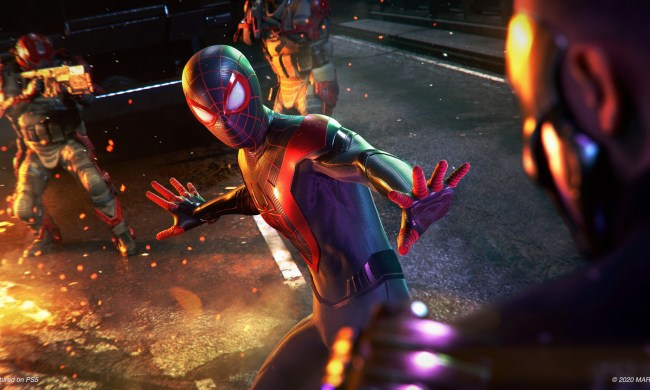Marvel’s Spider-Man 2, like the best Spider-Man stories, leaves a lasting impact on its characters. In comics, events like Death of Gwen Stacy, the corruption of Peter with the symbiote, Peter’s marriage to MJ, and the reveal of his identity during Civil War left a mark on both the web-slinger and readers because they were character-driven moments that felt like they would change Spider-Man forever. Not all of these moments were actually allowed to do that, though. To maintain a brand identity and accommodate an ever-revolving door of writers, Marvel Comics always tries to get Spider-Man back to a status quo after radical changes.
Most infamously, One More Day undid Peter Parker and Mary Jane’s marriage and the fact that people knew Spider-Man’s identity after Civil War. Although there are still plenty of excellent Spider-Man stories coming out to this day, personal stories with a feeling of permanence are rare unless the comic is set in an alternate universe like the excellent Spider-Man: Life Story.
This issue applies to Spider-Man’s iconic rogues’ gallery too. In comics, characters like Sandman and Doctor Octopus have had their own antiheroic redemption arcs but eventually go back to their old supervillain ways when Marvel editorial decides that is what’s best. That’s why one of the things I enjoy the most about Marvel’s Spider-Man 2 is the sense of character development, finality, and even redemption that it gives to many of Spider-Man’s villains. It’s simply something that’s tough to get out of Spider-Man comics nowadays, which makes Marvel’s Spider-Man 2 feel even more special.
Spoilers for Marvel’s Spider-Man 2 follow.
Looking at the people behind the masks
When we meet Mysterio for the first time in Marvel’s Spider-Man 2, he’s debuting a new form of interactive technology called Mysteriums around New York. They’re going haywire, and all signs seem to point to the fact that Mysterio has relapsed into his old villainous ways. By listening to the dev diaries and completing this sidequest, though, Miles Morales discovers what’s happening is much more nuanced.

Quentin Beck (Mysterio’s real identity) created this new technology after getting out of prison, but no one would support him because of his supervillain past. He seemingly finds nice co-workers in his old friend Betsy and her assistant, Cole, but they end up hoodwinking Mysterio and Spider-Man, forcing Beck to bring back the Mysterio branding for the Mysteriums. They then end up framing Beck for collecting the bank information of those who use them.
Spider-Man finds all of this out in what he initially thinks is a final confrontation with Mysterio. Afterward, Miles and Quentin speak, and Quentin says, “Mysterio will always be a villain, just as Spider-Man will always be a hero. It’s when you start looking at the people behind the masks that things get messy.” Quentin might not be a fully healed, perfect human with a normal life, but he’s not Mysterio anymore. This nuanced look at criminal rehabilitation is a core aspect of a lot of character arcs in Marvel’s Spider-Man 2. With Mysterio, Insomniac explores how ex-cons can struggle with grifters trying to take advantage of their situation. In Mister Negative’s case, he’s reformed to the point where he’s willing to actively be a hero and give up his powers to help Miles and Peter defeat Venom.
More broadly speaking, Marvel’s Spider-Man 2 is fascinated with analyzing how society treats and perceives “villains.” Kraven personifies this as a masochist who only sees villains like Lizard Tombstone, Scorpion, Vulture, Sandman, and Mister Negative for their powers and abilities, only to be shocked and angry if they’ve lost their edge, moved on, and are not as willing to fight as he thought. This becomes obvious during Sandman’s sidequest, which reveals that the character was just trying to live a peaceful life with his daughter before Kraven intervened.

Not a black-and-white world
It’s a mindset Spider-Men have to get out of, too. Miles wants to kill Mister Negative for murdering his father until he understands that those feelings are similar to what inspired Mister Negative to get revenge on Norman Osborn in the first place. Meanwhile, Peter and Harry see the Symbiote as a solution to the problem; they can remove any nuance and “heal the world” by making everything one. Spider-Man 2 recognizes that the real world isn’t black-and-white like that, so this superhero universe shouldn’t be either.
By the end of Marvel’s Spider-Man 2, it’s clear that Mister Negative, Tombstone, and Sandman are reformed, while Scorpion and Vulture are dead by Kraven’s hand. By empathizing with these characters (or being willing to outright kill them in some cases), the world and characters of Marvel’s Spider-Man 2 change in meaningful ways that shouldn’t be undone and probably won’t be because Insomanic doesn’t have the same need to maintain the status quo.
Not every villain is treated this way. Carnage is clearly the same serial killer he was years ago in Wraith’s sidequests, and Kraven and Venom are mostly played as straight villains until their defeat. That was a bit surprising with Venom specifically, as he is one of the few Spider-Man villains to somewhat permanently become an antihero in the comics. But while Venom isn’t redeemed, Harry is. It’s clear that Insomniac sees the two as separate characters, with Venom truly being a symbiote taking advantage of its host.

By completing all of the Emily-May Foundation sidequests, Peter gets a final message from Harry. In it, Harry affirms that he still loves and respects Peter and gives Peter the materials necessary to create a new kind of plant that can help and thrive around New York. Even after everything he did as Venom, the ending of this quest shows that he’s still a kind soul who truly cares for his friends and wants to make the world a better place. Most of those in this universe probably wouldn’t glean that nuance after seeing Venom bite Kraven’s head off.
Ultimately, this remediation of many of Marvel’s Spider-Man 2’s villainous characters gives the game a sense of narrative impact that feels impossible to get from most Spider-Man comics nowadays. It’s concerned with looking behind the masks and making these characters grow, learn, and evolve first and foremost, and that allows it to tell one of the most personal, relatable, and permanent-feeling Spider-Man stories ever.
Marvel’s Spider-Man 2 is out now on PlayStation 5.



